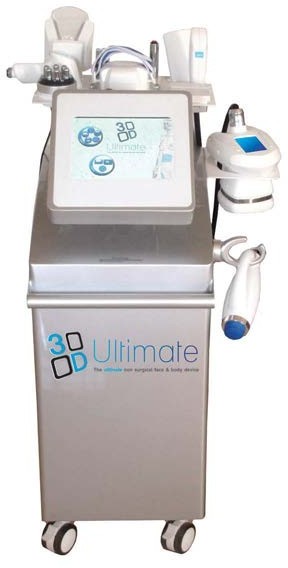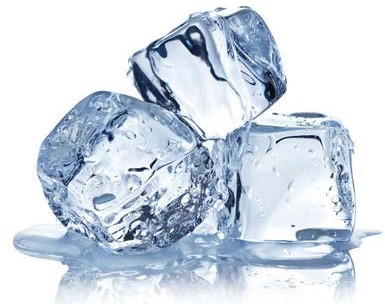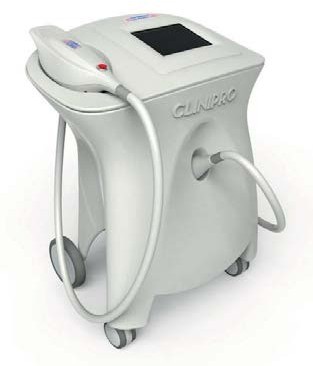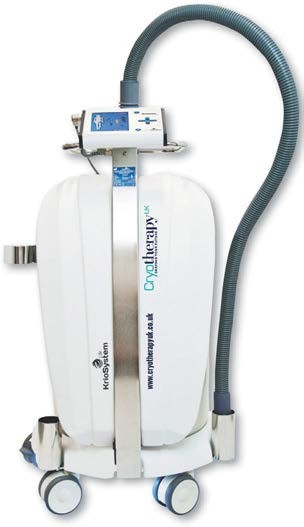Fat freezing is fast becoming the most talked about treatment in body contouring. Georgia Seago investigates whether it’s worth the investment
machines for the body
Georgia Seago
Fast results, minimal discomfort and no downtime – the three things every client surely looks for in a fat-reduction treatment. Cryolipolysis, or fat freezing, has fast become a buzzword among consumers and claims to offer all three, but are the promises too good to be true? In January this year, UK private clinic comparison site WhatClinic.com named it the fastest growing treatment in 2016, with a 130% increase in enquiries. The main benefit of cryo technology over other bodycontouring methods is claimed to be that most people only need a one-off session to achieve results, so it’s ideal for busy, time-poor clients. Downtime and aftercare are also minimal.
A recent survey by Botox manufacturer Allergan found nearly half of US adults (1,996 were asked in total) felt they had a double chin and were bothered by it. As it happens, this submental fullness under the chin is one of the areas fatfreezing devices are well placed to target, with many manufacturers having developed applicators specifically shaped to fit the area.

3D-Ultimate from 3D-Lipo
Lipocontrast, distributed in the UK by Cryoesthetics, is one such device. A blend of freezing and heating technologies, the machine uses vacuum to isolate the area (covered with conductive gel), heats it to around 42oC then plummets it back down to 3°C, before raising the temperature again. “You can flush fat cells out a lot quicker because you’re liquidising with the heat at the end,” says Zoe Jacques, who uses the machine in her salon The Beauty Room AL5 in Harpenden. “For this reason, we see better results on people who exercise along with a course of treatment because they’re sweating more and probably consuming more water, too.”
Supporting role
As with most non-invasive body contouring methods, this is a common caveat. Clients are unlikely to achieve noticeable or lasting results unless they also make other healthy lifestyle choices. “You have to be really firm with clients that it’s not just a quick fix,” says Jemma Knox, managing director of Sculpt Aesthetics in Chorley, where the 3D-Ultimate from 3D-Lipo is used for cryo treatments. The machine has a duo applicator to allow two areas to be treated simultaneously.
However, a lot of clients are attracted to fat freezing because they’ve heard one treatment is often all that’s needed, which can lead to disatisfaction with results. “A lot of salons are treating people who it really isn’t suitable for, and then [clients] will say it hasn’t worked,” says Knox.
The general consensus is that fat freezing isn’t suitable for severely overweight or often even overweight clients. An ideal candidate is someone close to his or her ideal body weight but with small, localised pockets of excess fat that will not respond to diet and exercise. “If a client was severely overweight we’d turn them away,” says Jacques. “They’d need to go and lose the weight first, otherwise it would take a lot of time and money and you just wouldn’t get the results.” On the other hand, she says Lipocontrast “works best on pockets and fibrous fat”. Fibrous fat is a tough form of subcutaneous fat that is often responsible for set-in rolls, like those that can form under where a bra sits.

This isn’t necessarily the case with all freezing methods. Matthew Bailey, who manages the Cryotherapy UK clinic in Salford, says: “I’d say you’d actually see better results the more fat you have, but I always tell clients that if they’re exercising regularly and eating healthily, they’re going to lose the weight.”
He uses the Cryotherapy UK device, a liquid nitrogen vapour spray at a temperature ranging from -145 to -160°C, to freeze white adipose tissue, which changes it to brown, the kind that is easier to burn off. He explains: “It works on extremely thick fat cells in the same way it does in sports therapy, when you might spray liquid nitrogen onto the skin to break down scar tissue. It breaks [fat cells] up and you start to metabolise that area.”
Add-on opportunities
As with similar treatments, the Cryotherapy UK device also claims to have an effect on skin tightening by stimulating collagen production. But this is when it’s important to understand the limitations of a device, exactly what results the client is looking for and when to suggest they try a different treatment. “I’d say 60% of people who come to us have seen a particular treatment advertised and think ‘that’s what I want’,” says Knox. “But we end up moving a lot of them over to something else that’s more suited to them.”
For example, she says she would recommend HIFU (high intensity focused ultrasound) for skin tightening if this was a bigger concern than fat reduction, but that cryo alone could be better if fat removal was the client’s only goal.

Cryoesthetics Lipocontrast
Fat-freezing devices are often attractive to salons and clinics that are looking for a machine-based treatment that frees up their time during the working day. Devices like 3D-Ultimate and Lipocontrast can be programmed and left on the area for the duration of the treatment, allowing the therapist to safely leave the client and attend to other jobs around the salon.
“YOU HAVE TO BE REALLY FIRM WITH CLIENTS THAT IT’S NOT JUST A QUICK FIX”
Because this isn’t typically a hands-on treatment, it also creates an opportunity to sell add-on services. “We tend to do other treatments while the machine is on, like a nail service or lash lift, so the client isn’t just lying there,” says Jacques.
Price points
The Beauty Room AL5 charges £190 per area for a 60-minute Lipocontrast treatment. With no consumables – the machine doesn’t use applicator pads because the conductive gel works in their place – it sounds like a secure moneymaker, and Jacques says it’s been a great investment for the salon. “Once you start doing it and word gets around its unbelievable. Every other salon owner I’ve recommended it to is over the moon with it,” she says, adding that a device like this is a good way for salons to transition into advanced treatments in that it isn’t a big jump in terms of cost. “It draws in a different clientele and is definitely a stepping stone into aesthetics for us,” she says.

The Cryotherapy UK device
Salford Cryotherapy UK clinic charges £90 for a cryo session and the only consumable is the liquid nitrogen itself, which the company sells for £1.30 per litre. “It’s a really cost-effective treatment and with some clients you won’t even use a litre in a session,” says Bailey. “In terms of the treatment price tag, there’s a very wide profit margin.” At Sculpt Aesthetics, cryo sessions with 3D-Ultimate are one of the cheapest treatments on the menu, says Knox, because “it costs so little to do and isn’t as labour intensive as other treatments. It’s a really lucrative investment but you have to make sure you’re not missselling,” she emphasises. “It’s vital to explain to clients what can impact the effectiveness of the treatment and be clear that it is there to support other efforts.” PB